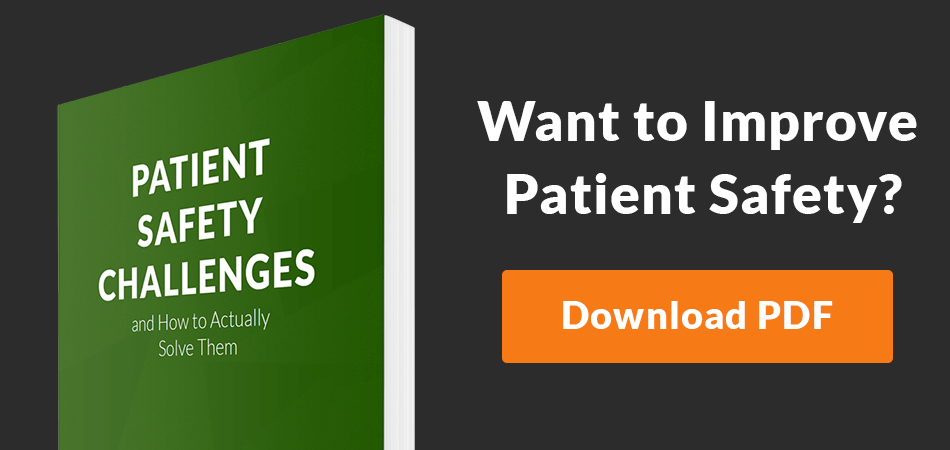%20RFA%20(1).png?width=840&height=473&name=NFPA%2099%20(2021)%20RFA%20(1).png)
In the world of healthcare, safety and efficiency are paramount. The National Fire Protection Association (NFPA) introduced the NFPA 99 - Health Care Facilities Code to ensure medical facilities adhere to the highest standards. One crucial aspect of this code is the concept of Responsible Facility Authority (RFA).
This blog post delves into the key responsibilities, qualifications, and the Permit-to-Work System associated with the RFA, as outlined in code references 5.1.14 and 5.1.14.1. Let's understand how the RFA ensures uninterrupted quality, quantity, and continuity of supply in medical gas and vacuum systems.
Are You Struggling With Medical Gas Compliance?
CHT offers medical gas services to help you reach your compliance goals. To help you navigate through these challenges, start with a free 30-minute discovery call.

Responsibilities of the Responsible Facility Authority
According to code reference 5.1.14.1.2, the Responsible Facility Authority (RFA) is primarily responsible for implementing the piped medical gas and vacuum systems requirements as per the NFPA 99 code. This responsibility extends to medical gas, support gas, medical vacuum, and WAGD systems. The RFA has several essential duties:
Risk Assessment and Interpretations
The RFA advises on risk assessments related to piped medical gas and vacuum systems, providing interpretations of the code as they apply to the facility.
Emergency Plan Maintenance
The RFA is vital in maintaining the facility's emergency plan related to piped medical gas and vacuum systems. This ensures that the plan adequately addresses the quality, quantity, and continuity of supply in emergencies.
Safety in Design and Construction
The RFA ensures that the emergency plan specifically accommodates unique safety requirements arising from building design or construction elements, thus safeguarding patient and staff well-being.
Permit-to-Work Rules
The RFA establishes and enforces permit-to-work rules about piped medical gas and vacuum systems. These rules ensure patient, staff, and visitor safety during repair, modification, or construction activities involving these systems.
Test Report Evaluation
The RFA evaluates and accepts the required test reports, contributing to the overall safety and compliance of the facility.
Record Maintenance
Maintaining accurate records of piped medical gas and vacuum system installations and operations is another important responsibility of the RFA.
Qualifications of an RFA
As outlined in code reference 5.1.14.1.3, the person(s) designated as the Responsible Facility Authority must be qualified to interpret, implement, and advise on the NFPA 99 code. Appropriate qualifications can be demonstrated through the following:
Educational Program
Completion of an educational program approved by the health care facility's governing body and equivalent or superior to ASSE 6010 or ASSE 6020.
ASSE Certifications
Holding ASSE 6010 (Medical Gas Systems Installer), ASSE 6020 (Medical Gas Systems Inspector), ASSE 6030 (Medical Gas Systems Verifier), or ASSE 6040 (Medical Gas Maintenance Personnel) certifications.
Additional Information: To learn more about the RFA, visit our blog, On-site Responsible Facility Authority to Oversee Critical Systems.
Permit-to-Work System
Code reference 5.1.14.2 emphasizes the importance of the Permit-to-Work System managed by the Responsible Facility Authority. This system ensures uninterrupted quality, quantity, and continuity of supply during maintenance, repair, or construction work involving piped medical gas and vacuum systems. The system includes processes to:
Communication
Ensure effective communication with medical staff and facility administration before initiating any work on piped medical gas and vacuum systems.
Alternate Supply and Patient Care
Implement alternative supply arrangements or adjustments in patient care to ensure uninterrupted services during system maintenance or interruption.
Competent Workforce
Ensure competent individuals with appropriate qualifications perform all work on piped medical gas and vacuum systems.
Shutdown and Restoration Procedures
Define procedures for the safe shutdown and restoration of medical gases, with observance by all personnel involved.
Safety Measures
Implement and observe safety procedures for all individuals engaged in working on the systems.
Code Adherence
Ensure all maintenance, repair, or construction procedures adhere to the NFPA 99 code.
System Testing and Acceptance
Verify the correct testing of affected system components and demonstrate their suitability for patient use.
Conclusion
The Responsible Facility Authority (RFA) embodies the commitment to safety and compliance within medical facilities.
With responsibilities spanning risk assessment, emergency planning, permit-to-work rules, and more, the RFA ensures the uninterrupted quality, quantity, and continuity of supply in medical gas and vacuum systems.
By adhering to qualifications and managing the Permit-to-Work System, medical facility directors can uphold the highest patient and staff safety standards \as dictated by the NFPA 99 code.




